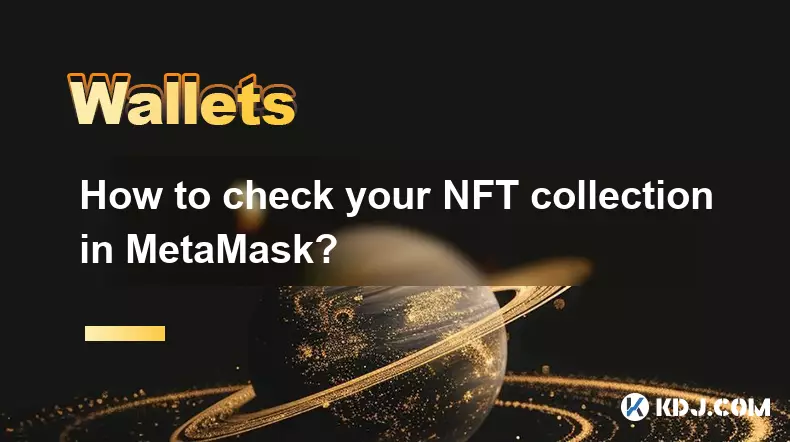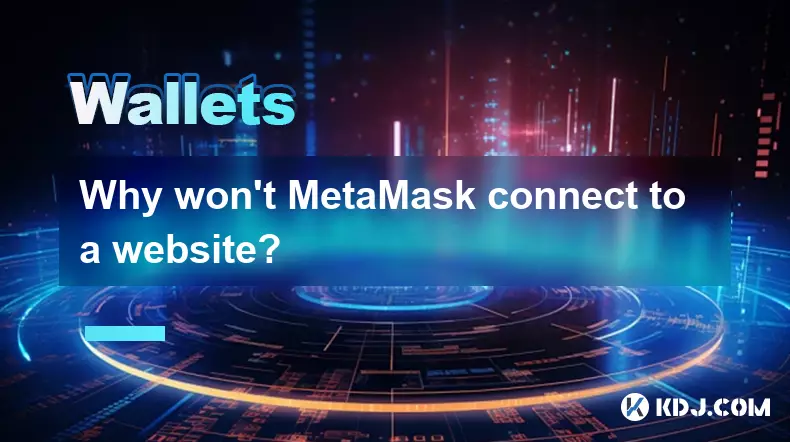-
 bitcoin
bitcoin $100977.009184 USD
-2.05% -
 ethereum
ethereum $3282.009150 USD
-3.23% -
 tether
tether $0.999813 USD
-0.02% -
 xrp
xrp $2.208254 USD
-4.89% -
 bnb
bnb $951.411089 USD
0.55% -
 solana
solana $155.761205 USD
-2.84% -
 usd-coin
usd-coin $1.000217 USD
0.02% -
 tron
tron $0.284475 USD
-1.28% -
 dogecoin
dogecoin $0.162363 USD
-1.53% -
 cardano
cardano $0.533988 USD
-0.47% -
 hyperliquid
hyperliquid $39.174339 USD
-3.22% -
 chainlink
chainlink $14.724828 USD
-1.16% -
 bitcoin-cash
bitcoin-cash $477.297986 USD
-1.28% -
 zcash
zcash $554.227426 USD
17.30% -
 ethena-usde
ethena-usde $0.998995 USD
-0.03%
How to secure your Coinbase Wallet from scammers?
Never share your Coinbase Wallet recovery phrase—scammers posing as support may trick you, but legitimate teams will never ask for it. Stay vigilant.
Nov 06, 2025 at 01:39 am

Understanding the Risks to Your Coinbase Wallet
1. Cybercriminals frequently target cryptocurrency holders due to the irreversible nature of blockchain transactions. Once funds are sent, they cannot be retrieved unless the recipient voluntarily returns them. This makes wallets like Coinbase a prime target for phishing attempts and social engineering.
2. Fake websites mimicking the official Coinbase domain are common. Users who unknowingly enter their login credentials on these fraudulent sites hand over direct access to their accounts. These counterfeit platforms often appear in search engine results or are shared through malicious links.
3. Scammers use psychological manipulation, posing as customer support agents or offering fake giveaways. They create urgency, convincing users to disclose private keys or seed phrases under false pretenses such as “securing your account” or “verifying ownership.”
4. Malware designed to intercept clipboard data can alter wallet addresses during copy-paste actions. If you're sending crypto and your clipboard is compromised, the malware may replace the intended address with the attacker’s, redirecting your funds without immediate notice.
5. Public Wi-Fi networks increase exposure to man-in-the-middle attacks. Logging into your Coinbase Wallet on unsecured connections allows attackers to capture session tokens or login details, potentially granting them full control over your wallet.
Essential Security Measures for Protection
1. Always enable two-factor authentication (2FA) using an authenticator app like Google Authenticator or Authy. Avoid SMS-based 2FA, as SIM-swapping attacks can bypass this layer by hijacking your phone number.
2. Never share your 12-word recovery phrase with anyone, not even individuals claiming to be from Coinbase support. This phrase grants complete access to your wallet and should be stored offline in a secure physical location, such as a fireproof safe.
3. Regularly update the Coinbase Wallet app to ensure you have the latest security patches. Developers frequently release updates to fix vulnerabilities that could be exploited by attackers.
4. Use strong, unique passwords that combine uppercase letters, lowercase letters, numbers, and special characters. Reusing passwords across platforms increases the risk of credential stuffing if another service experiences a data breach.
5. Install reputable antivirus and anti-malware software on your devices. These tools help detect and block keyloggers or clipboard-changing scripts that aim to steal your wallet information.
Avoiding Phishing and Social Engineering Attacks
1. Double-check URLs before entering any login information. The official Coinbase Wallet site is https://wallet.coinbase.com. Look for HTTPS and the padlock icon in the browser bar, but understand that these alone do not guarantee legitimacy.
2. Be cautious of unsolicited messages on social media, email, or messaging apps. Scammers often impersonate official representatives and offer technical help or investment opportunities requiring wallet access.
3. Coinbase will never ask for your password, recovery phrase, or verification codes via email, phone, or chat. Any request for such information is a scam and should be reported immediately.
4. Bookmark the official Coinbase Wallet website to avoid accidental navigation to fake versions. Do not rely on search engines when accessing your wallet.
5. Educate yourself on common scam tactics, such as fake airdrops or “limited-time” offers. Legitimate projects do not require your private keys to distribute tokens.
Frequently Asked Questions
What should I do if I accidentally shared my seed phrase?Immediately transfer all funds to a new wallet generated on a clean, secure device. Assume the compromised wallet is no longer safe. Monitor transaction history closely for unauthorized movements.
How can I verify the authenticity of a Coinbase support representative?Only communicate through official channels listed on the Coinbase website. Support agents will never initiate contact via social media or personal email. Verify identities through the app’s built-in help section.
Is it safe to store large amounts of crypto in Coinbase Wallet?While Coinbase Wallet implements robust security features, no digital wallet is immune to threats. For significant holdings, consider using a hardware wallet that keeps private keys offline and integrates with Coinbase Wallet for transaction signing.
Can someone hack my Coinbase Wallet remotely without my interaction?Direct remote hacking is unlikely if you follow security best practices. Most breaches occur due to user error—clicking malicious links, installing infected apps, or revealing sensitive data. Maintaining vigilance drastically reduces risk exposure.
Disclaimer:info@kdj.com
The information provided is not trading advice. kdj.com does not assume any responsibility for any investments made based on the information provided in this article. Cryptocurrencies are highly volatile and it is highly recommended that you invest with caution after thorough research!
If you believe that the content used on this website infringes your copyright, please contact us immediately (info@kdj.com) and we will delete it promptly.
- BlockDAG, Avalanche, Dogecoin: Crypto's Leading Trio in 2025
- 2025-11-07 22:05:01
- Layer 2 Coins: Will There Be a Potential Explosion by 2026?
- 2025-11-07 16:50:02
- Filecoin, ICP, and the AI Infrastructure Renaissance: Is History Repeating?
- 2025-11-07 16:50:02
- Bitcoin's Wild Ride: Surges, Zeros, and the Search for Stability
- 2025-11-07 17:05:01
- XRP, Bitcoin, and the Rally: What's the Deal, New York?
- 2025-11-07 17:25:01
- Filecoin, DePIN, and a Technical Breakout: What's the Buzz?
- 2025-11-07 17:05:01
Related knowledge

How to check your NFT collection in MetaMask?
Nov 06,2025 at 08:20pm
Accessing Your NFTs in MetaMask Wallet1. Open the MetaMask browser extension or mobile app and ensure you are logged into your wallet account. Once in...

Why is the MetaMask swap feature failing?
Nov 06,2025 at 09:20pm
Understanding MetaMask Swap FailuresMetaMask, one of the most widely used cryptocurrency wallets, enables users to swap tokens directly within the int...

How to import an account into MetaMask using a private key?
Nov 07,2025 at 07:40am
Importing an Account into MetaMask with a Private KeyMetaMask is one of the most widely used cryptocurrency wallets, particularly within decentralized...

What to do if my MetaMask wallet was compromised?
Nov 06,2025 at 04:59pm
Immediate Steps to Take After a Compromised MetaMask Wallet1. Disconnect your device from any phishing websites immediately. If you clicked on a suspi...

How to reset your MetaMask account if transactions are stuck?
Nov 06,2025 at 05:39pm
Understanding the MetaMask Account Reset Process1. When transactions appear stuck in MetaMask, users often consider resetting their account to resolve...

Why won't MetaMask connect to a website?
Nov 07,2025 at 06:40am
Common Reasons MetaMask Fails to Connect to Websites1. The browser extension is not properly installed or activated. Users may think MetaMask is ready...

How to check your NFT collection in MetaMask?
Nov 06,2025 at 08:20pm
Accessing Your NFTs in MetaMask Wallet1. Open the MetaMask browser extension or mobile app and ensure you are logged into your wallet account. Once in...

Why is the MetaMask swap feature failing?
Nov 06,2025 at 09:20pm
Understanding MetaMask Swap FailuresMetaMask, one of the most widely used cryptocurrency wallets, enables users to swap tokens directly within the int...

How to import an account into MetaMask using a private key?
Nov 07,2025 at 07:40am
Importing an Account into MetaMask with a Private KeyMetaMask is one of the most widely used cryptocurrency wallets, particularly within decentralized...

What to do if my MetaMask wallet was compromised?
Nov 06,2025 at 04:59pm
Immediate Steps to Take After a Compromised MetaMask Wallet1. Disconnect your device from any phishing websites immediately. If you clicked on a suspi...

How to reset your MetaMask account if transactions are stuck?
Nov 06,2025 at 05:39pm
Understanding the MetaMask Account Reset Process1. When transactions appear stuck in MetaMask, users often consider resetting their account to resolve...

Why won't MetaMask connect to a website?
Nov 07,2025 at 06:40am
Common Reasons MetaMask Fails to Connect to Websites1. The browser extension is not properly installed or activated. Users may think MetaMask is ready...
See all articles





















![The Graph Price Prediction [GRT Crypto Price News Today] The Graph Price Prediction [GRT Crypto Price News Today]](/uploads/2025/11/07/cryptocurrencies-news/videos/690d4df44fe69_image_500_375.webp)




















































